Pompeii - an ancient Italian city destroyed by the Vesuvius volcano
Where is located Pompeii?
Address of Pompeii is Pompeii, Naples, Campania, Italy
show on map
When was built Pompeii?
Built date of Pompeii is VI-VII century B.C. - creation date
24 August or 24 October 79 A.D. - date of departure
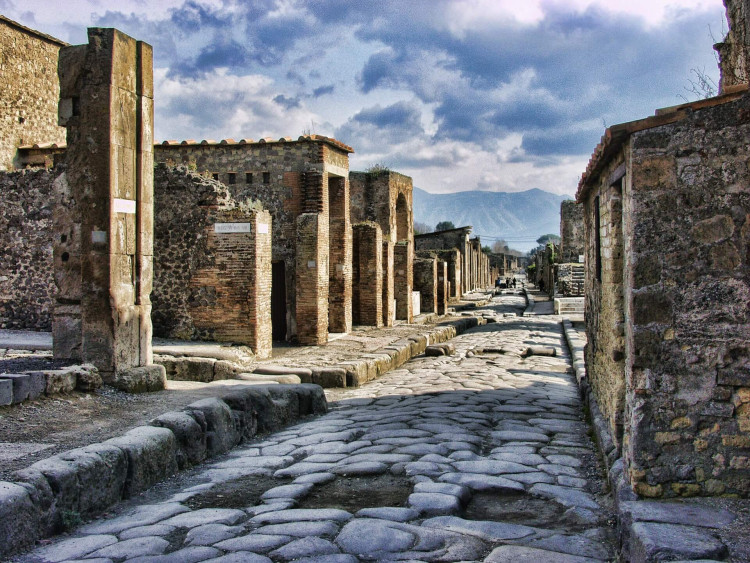
Facts, informations and history of Pompeii
Pompeii is an ancient Roman city located near modern Naples in Italy.
The city was destroyed by an explosion 8 kilometers away from Vesuvius, probably on August 24th, or October 24th 79 AD. As a result of the explosion the buildings were covered with 4 to 6 meters of volcanic ash and pumice stone.
Before the catastrophe they were a very developed and thriving city. It had an extensive water system, amphitheater, playgrounds and port.
One of the most fascinating facts about Vesuvius is also one of the saddest. Since the volcano hasn't erupted for 1800 years, some inhabitants of Pompeii did not realize that the mountain was a volcano. This ignorance and ignorance pulled a devastating price when it erupted. Nowadays Vesuvius is considered a Stratovolcano and it is unknown when he will wake up again. Currently, he has been inactive since its last explosion, which took place on March 13, 1944, when 26 people were killed.
Pompeii was founded in the 6th or 7th century BC by the Oskis, who settled on the slopes of Vesuvius and in the Sarno river basin. It was then under Greek and later under Etruscan rule.
In the fourth century BC they came under Roman rule, then in 80 AD they were conquered and became a Roman colony. After the town was seized, the infrastructure of the town was extensively expanded, most of which was built during the Augustus period.
When the volcano erupted, the city had 11 thousand inhabitants. Two thousand of them died as a result of the catastrophe, and the town itself was abandoned for over 1500 years.
The city was rediscovered in 1599 by the Italian architect Domenico Fontana, who dug a canal and changed the course of the river.
The excavation works did not start until 1748. Fortunately, the ash covering the buildings and the lack of air and moisture acted as a preservative, so the buildings looked almost exactly the same as 200 years before. Scattered pots, everyday items and household goods were mined in the street. Even jars with preserved fruit and bread were discovered.
In 1963 an inscription ("Rei publicae Pompeianorum") was also discovered, which identified the place as Pompeii.
During the excavations nearly 1000 places where the corpses were found were discovered. In these places, empty spaces were created in layers of ash, which enabled archaeologists to determine the exact positions in which people were at the time of death. Some died alone, others in groups, and others in the embrace of their loved ones.
Apart from residential houses, the town also included hotels, inns and taverns, as well as numerous stores, a theater, a forum with a basilica, temples, three palesters and thermal baths, and an amphitheater with gladiator barracks.
The forum, measuring 38 by 157 meters, included the Jupiter Temple (dimensions: 37 x 17 m), the Municipal Authority Building and the Curia. It was adjacent to the Eumachii Building (the largest of the buildings near the Forum), the Comitium, Macellum (a makeshift market), the Temple of Vespasian and the Temple of the Lars.
Other important buildings in Pompeii are the Temple of Apollo, Temple of Isis, Basilica (dimensions: 24 x 55 m), Grand Theater, Amphitheater (dimensions: 135 x 104 m) and Theaters.
In many places there are very well-preserved graffiti from before the eruption. They give visitors and historians an amazing insight into Roman society, showing examples of public announcements, information about elections and even private news.
As a result of the eruption the nearby town of Herkulanum was also destroyed. However, it was Pompeii that was the most popular holiday resort of the rich Romans who came here to spend their vacations.
With an area of 150 acres, Pompeii is now the largest archaeological site in the world.
Pompeii was inscribed in 1997 on the UNESCO World Heritage List and is one of the most popular tourist attractions in Italy, visited annually by about 2.6 million people.
In 1971 the band Pink Floyd recorded a live film "Pink Floyd: Live at Pompeii", where six songs were played in an ancient Roman amphitheater in the city during a concert. The audience consisted only of the film crew and local children.
"On the 24th of August, about one in the afternoon, my mother desired him to observe a cloud which appeared of a very unusual size and shape. [...] A cloud, from which mountain was uncertain, at this distance (but it was found afterwards to come from Mount Vesuvius), was ascending, the appearance of which I cannot give you a more exact description of than by likening it to that of a pine tree, for it shot up to a great height in the form of a very tall trunk, which spread itself out at the top into a sort of branches; occasioned, I imagine, either by a sudden gust of air that impelled it, the force of which decreased as it advanced upwards, or the cloud itself being pressed back again by its own weight, expanded in the manner I have mentioned; it appeared sometimes bright and sometimes dark and spotted, according as it was either more or less impregnated with earth and cinders. This phenomenon seemed to a man of such learning and research as my uncle extraordinary and worth further looking into." - an excerpt from an account of Vesuvius' eruption from 79. Pliny the Younger explains in a letter the death of his uncle Pliny the Elder.
Construction/building type
Building Pompeii is of type City
Architectural style
Architectural style of Pompeii is Pompeian
Other dimensions, parameters and frequently asked questions
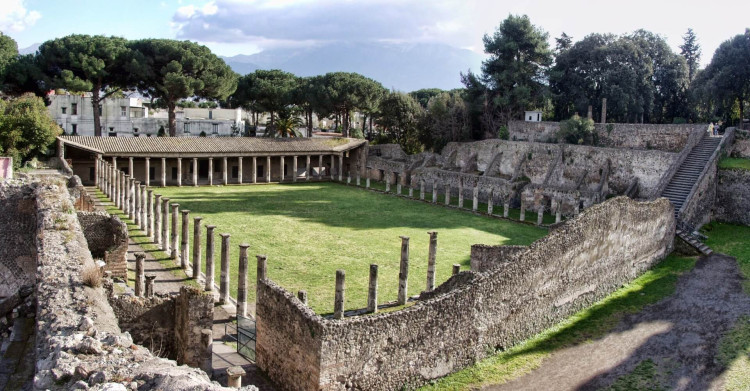
What area have Pompeii?
Pompeii have area of 64 - 67 hectares (170 acres)
Practical informations
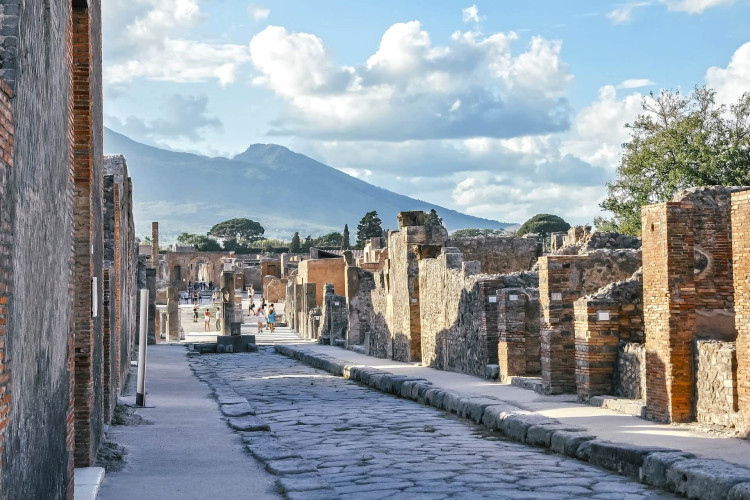
What is the cost of entry for Pompeii?
Tickets for Pompeii are available at the following prices and variants:
- Adults: €16.00.
- Reduced: €2.00 (for persons aged 18-25 years).
- Pre-sale additionally €1.50 for each price.
At what times is open Pompeii?
Pompeii is open or accessible to the public on the following dates and times:
- Open daily except Sundays and days: 1 January, 1 May and 25 December.
- Open from 09:00-17:00.
Is the building on the UNESCO World Heritage List?

The listing took place in the year 1997.
Details of the entry are available on the Unesco website at https://whc.unesco.org/en/list/829/
Official website
The official website of the building, where up-to-date information can be found, is http://www.pompeiisites.org/
Photo gallery Add photo
Location on map / How to get there




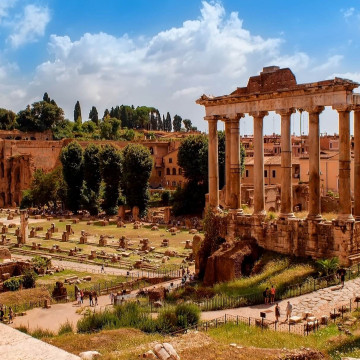
























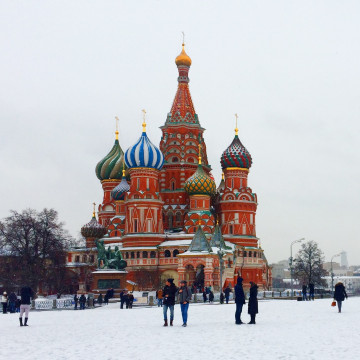

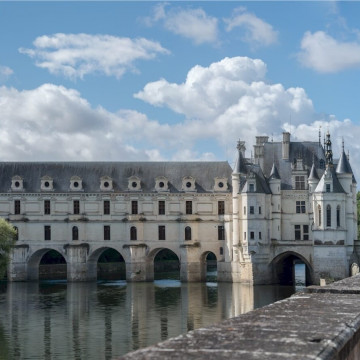
Comments to Pompeii (1) Average rating: 5 Add comment / Rate building
Based on 1 comment